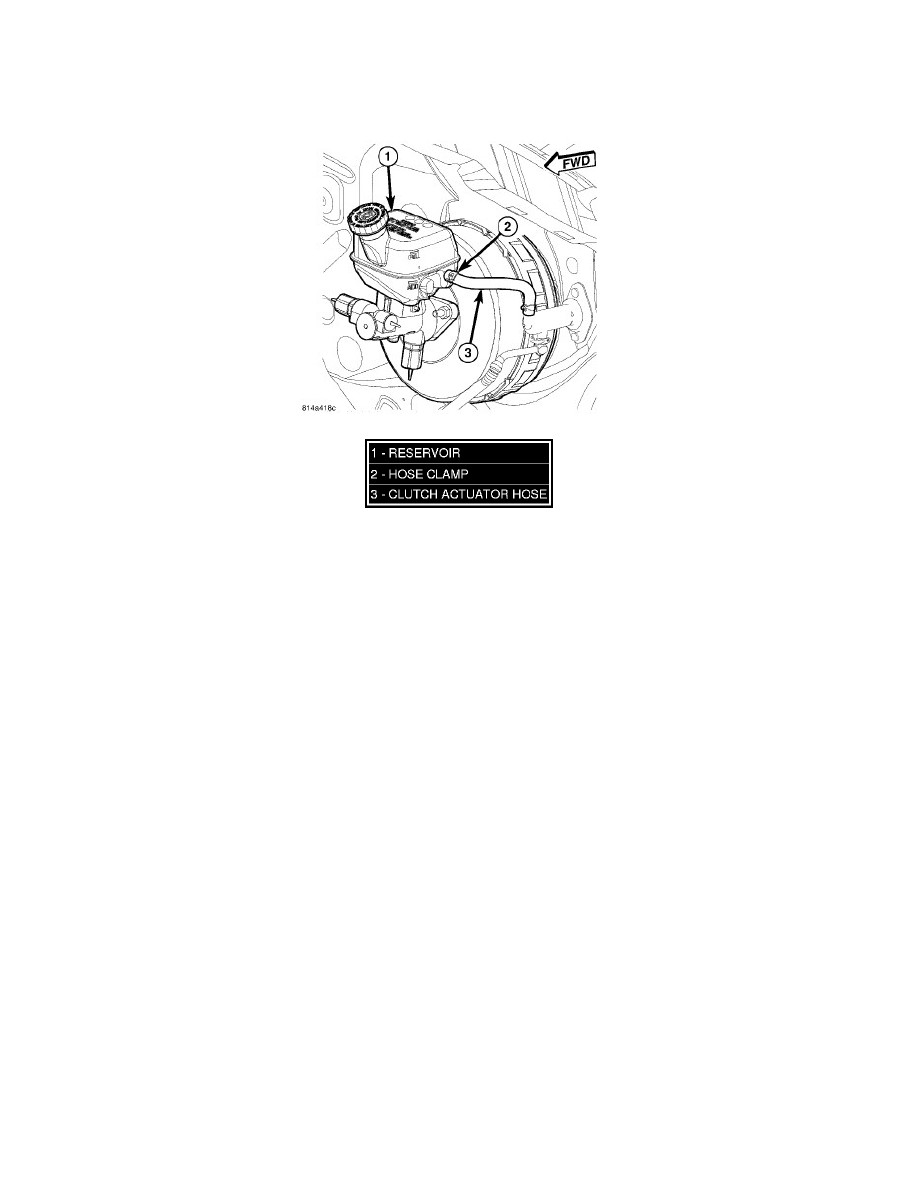PT Cruiser L4-2.4L Turbo (2009)

Brake Master Cylinder: Description and Operation
Brake Master Cylinder - Description
DESCRIPTION
The master cylinders (1) used on this vehicle are supplied by Continental Teves. Two master cylinders are used depending on whether or not the vehicle
is equipped with antilock brakes (ABS). Vehicles without ABS use a standard compensating-port master cylinder, while vehicles equipped with ABS use
a center-valve design master cylinder. The bore diameter for all applications is 22.2 mm (0.874 in.).
The non-ABS master cylinder (1) is a four-outlet design (one for each wheel brake). There are two ports at each piston. One feeds a front wheel brake
while the other feeds the opposite side rear wheel brake. The rear wheel brake ports are drilled and threaded to accept screw-in proportioning valves.
One valve is threaded into the bottom of the master cylinder housing at the primary piston and the other is threaded into the right side of the master
cylinder housing at the secondary piston.
All ABS master cylinders are a two-outlet design and the brake tubes from these primary and secondary outlet ports lead directly to the integrated control
unit (ICU) before going to each wheel brake.
All master cylinders mount to the power brake booster in the same manner.
The master cylinder body is an anodized aluminum casting. It has a machined bore to accept the master cylinder pistons and also has threaded ports with
seats for hydraulic brake tube connections.
The master cylinder has the brake fluid reservoir mounted on top of it which gravity feeds brake fluid to the master cylinder when it is required. The
reservoir is made of see-through plastic and it houses the brake fluid level switch. A removable brake fluid level switch is mounted in the left side.
